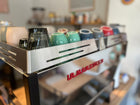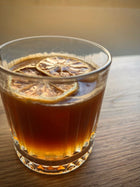More about Brazil Corrego do Pinheiro
Description
More
Less
Hidden in the mountainous community of Corrego do Pinheiro, the Costa family lives a simple life, which revolves around the product which provides for their livelihood – coffee.
Nelson Antonio da Costa and his bother Marcos were born into a humble family of 11 brothers and sisters. Today only the two brothers and a sister of theirs remain in the countryside of Brazil, growing coffee and helping each other in developing their properties.
The property of the Costa family is rather small, only 3 hectares, but possesses excellent potential for growing high-quality coffee. This potential was discovered by BSC (Bourbon Specialty Coffee), who awards the Costa family with 7000 Brazilian real for the 3rd place they achieve in a competition organized by BSC. This award, along with the successful partnership with BSC, give the Costa family a sense of certainty and optimism in continuing to invest and improve the quality of their coffee.
Country and Region Catuai
More
Less
Process: Pulped Natural
More
Less
Variety: Catuai
More
Less
Description
Hidden in the mountainous community of Corrego do Pinheiro, the Costa family lives a simple life, which revolves around the product which provides for their livelihood – coffee.
Nelson Antonio da Costa and his bother Marcos were born into a humble family of 11 brothers and sisters. Today only the two brothers and a sister of theirs remain in the countryside of Brazil, growing coffee and helping each other in developing their properties.
The property of the Costa family is rather small, only 3 hectares, but possesses excellent potential for growing high-quality coffee. This potential was discovered by BSC (Bourbon Specialty Coffee), who awards the Costa family with 7000 Brazilian real for the 3rd place they achieve in a competition organized by BSC. This award, along with the successful partnership with BSC, give the Costa family a sense of certainty and optimism in continuing to invest and improve the quality of their coffee.Country and Region Catuai
Process: Pulped Natural
Variety: Catuai
You May Also Like
More about us on social media
















